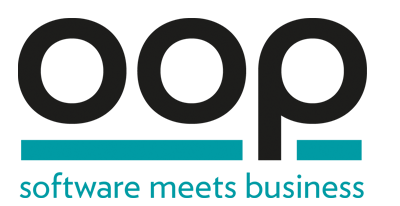Track: Software Architecture: Bridging Socio-Technical Gaps
- Dienstag
04.02. - Donnerstag
06.02.
Eigentlich definiert Architektur „nur“ die Struktur der Software. Aber das Gesetz von Conway weist schon auf den Zusammenhang zwischen Architektur und Organisation hin. Durch das Inverse Conway Maneuvre ist klar geworden, dass die geschickte Aufstellung der Organisation die Architektur maßgeblich beeinflussen kann.
Dieser Vortrag zeigt auf, dass Team Topologies auch erhebliche Konsequenzen für die Architektur-Arbeit hat: Team Topologies fungiert nicht nur als Werkzeug für Architektur, sondern…
Dynamikrobuste Softwareentwicklungsteams sind cross-funktional und fokussieren möglichst unabhängig von anderen Teams auf eine kognitiv bewältigbare (fachliche) Domäne. Um dies optimal tun zu können, benötigen sie Unterstützung von Plattform-Teams, die ihnen entlastende (Self-)Services anbieten.
Um von einem klassischen OPS-Team zu einem Plattform-Team zu werden, muss zum einen eine gewisse Kundenorientierung und Dienstleister-Mentalität etabliert werden, zum anderen braucht es ein passendes…
Our work with software is a system of systems, comprising technical systems (software, hardware...) and social systems (users, business, teams...). For decades, our primary focus has been on the quality of technical systems. Social capacity (agile, kanban ...) is often perceived as a support for producing software, a means to an end.
When complicated software systems take on more complex traits in a sociotechnical entanglement, software design need to be evolved from a craft of mechanistic…
Creating high-quality software is challenging due to a focus on solutions over understanding organizational context. Developers need to engage with stakeholders across contexts. However, stakeholder communication can lead to misunderstandings and conflicts, disrupting knowledge sharing. This often results in autocratic decisions by architects. Achieving sustainable and design decisions, it's more effective to employ visual techniques, improving collaboration with stakeholders.
This talk explores…
Disclosure - this is a talk about people - not about AI. This is a talk about how we will continue to apply our humans strenghts in a world enhanced by AI.
One of the LLM engines I work with seems to think it can take over my job as an architect. I say with some confidence that for the next few decades, my job will be heavily influenced by AI, but not replaced by AI. For example I am presenting and OOP and *it* is not.
Software architects and system architects will not be replaced anytime soon…
Architecture work can be tough: juggling tech stacks, new tools, facilitating decisions, working with different stakeholders & even some organisational development. Herding cats is easier, isn’t it?
With Architecture in ACTion, I introduce you to decades of practical science on the Human Mind. We’ll dig into Psychological Flexibility and ACT - concepts that are (still) rarely used in biz but have huge impact at work!
Because: Deep tech expertise, domain navigation *and* change skills is a lot!
Y…
Code that is well-designed and easy to understand is cheaper to extend and modify - so you can deliver more value, sooner. Many organizations struggle with older codebases that use outdated designs and have too much cruft.
I found that the technical coaching I was doing was addressing those kinds of issues successfully, but it was slow to scale up to large projects where there are tens of teams of developers working on different parts of the same codebase.
Recently I’ve been using a…
The Japanese philosophy of Wabi-Sabi celebrates the beauty of imperfection. I will explore how applying such principles to software engineering projects can enhance the outcomes. Using the relaunch of my client's content-driven website as a case study, I will demonstrate how an open and positive attitude, combined with flexibility and a readiness to embrace unconventional methods, has led to better results. The aim of this talk is to enable project team members to confidently navigate the…
In der modernen Unternehmensarchitektur ist eine enge Zusammenarbeit zwischen IT-Demand und IT-Supplier essenziell, um reibungslose Abläufe und nachhaltigen Erfolg zu gewährleisten. Dieser Beitrag untersucht die Spannungsfelder zwischen IT-Demand und IT-Supplier, die oft durch Unwissenheit und mangelnde Feldkompetenz entstehen. Solche Herausforderungen können zu erheblichen Strömungsabrissen führen, die den Projekterfolg gefährden. Um diese Risiken zu minimieren, werden pragmatische…
Resilience is an important issue these days. Many companies claim to have a resilient IT, very few have one.
What does it mean to be resilient? How do I get there? How can I figure out where I currently am? How can I improve?
We will look at several gradations of becoming resilient. We will examine their properties and tradeoffs and how to get there. We will discuss what we can achieve at an IT system level and when we need to address the whole socio-technical system.
At the end of the session,…

